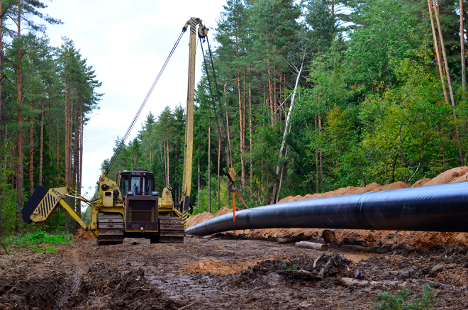A little more than a year ago, I wrote that Pembina Pipeline (NYSE: PBA) would earn a dividend safety upgrade if 2019’s free cash flow projection was on the mark.
It wasn’t. Not even close.
In March 2019, the Canadian pipeline company was forecast to generate CA$1.44 billion in free cash flow. Instead, it generated just CA$887 million while paying out CA$1.32 billion in dividends.
In other words, it paid out CA$1.48 in dividends for every CA$1 in free cash flow.
This year, free cash flow is expected to grow 10% to CA$975.3 million, which still won’t cover the CA$1.38 billion the company will likely pay shareholders.
That figure includes the cash flow generated from the portion of pipeline acquired from Kinder Morgan (NYSE: KMI) last December.

When a company doesn’t generate enough cash to pay the dividend, it must dip into cash on hand or borrow money.
Another problem for Pembina is that it has borrowed a lot of money already. The company has more than CA$10.6 billion in debt.
Its debt-to-EBITDA (earnings before interest, taxes, depreciation and amortization) ratio, a measure that we use in SafetyNet Pro, is more than 4, which is too high.
SafetyNet Pro is a groundbreaking tool that predicts dividend cuts with stunning accuracy. With it, you can determine the dividend safety rating of nearly 1,000 stocks. Access to SafetyNet Pro is reserved exclusively for subscribers of Marc’s newsletter, The Oxford Income Letter. To learn more about SafetyNet Pro and The Oxford Income Letter, click here now. |
|
In other words, Pembina’s debt is more than four times the amount of EBITDA.
The Calgary, Alberta-based oil and gas pipeline company has never cut its dividend since it began paying one in 2010, and it has raised its dividend each year since 2012. So that’s positive.
But Pembina’s cash flow doesn’t cover the dividend, and it doesn’t appear that it will anytime soon. So the company will have to go further into debt to pay shareholders.
In a normal environment, perhaps that’s sustainable for a while. But we are no longer in a normal environment.
Considering Pembina’s lack of cash flow and high debt load, the dividend cannot be considered safe. In fact, the stock not only failed to get an upgrade from last year, but also has fallen two notches to the lowest rating for dividend safety.
Dividend Safety Rating: F
If you have a stock whose dividend safety you’d like me to analyze, leave the ticker in the comments section.
And don’t forget to check the search box on the upper right part of the Wealthy Retirement webpage to see if I’ve written about your stock recently.
Good investing,
Marc
